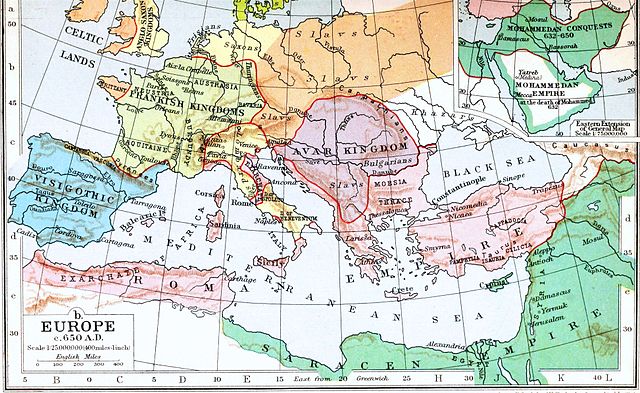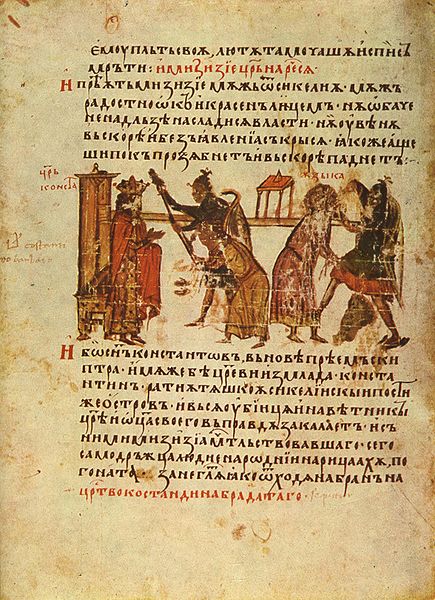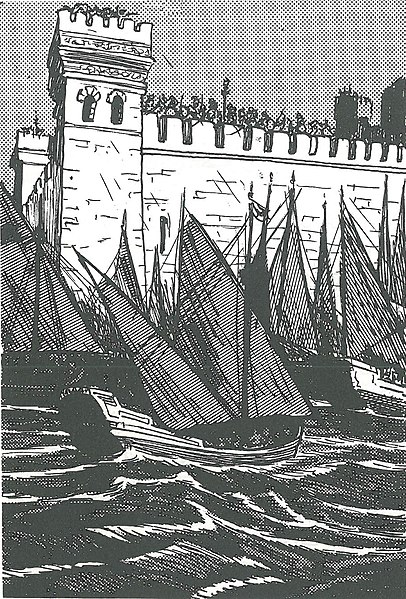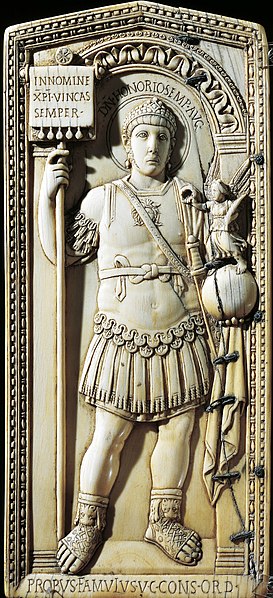Constans II, nicknamed "the Bearded", was the Byzantine emperor from 641 to 668. Constans was the last attested emperor to serve as consul, in 642, although the office continued to exist until the reign of Leo VI the Wise. His religious policy saw him steering a middle line in disputes between the Orthodoxy and Monothelitism by refusing to persecute either and prohibited discussion of the natures of Jesus Christ under the Type of Constans in 648. His reign coincided with Muslim invasions under, Umar, Uthman, and Mu'awiya I in the late 640s to 660s. Constans was the first emperor to visit Rome since the fall of the Western Roman Empire in 476, and the last one to visit Rome while it was still held by the Empire.
A solidus of Constans II c. 651–654, wearing a diadem and holding the globus cruciger. The inscription reads dn constantinus pp av.
Byzantine Empire in 650 under Constans II
Torture of Maximus the Confessor under the orders of emperor Constans II, miniature from the 12th century Manasses Chronicle.
The Roman fleet engaging the Arabs at the Battle of the Masts off the Lycian coast.
A consul was the highest elected public official of the Roman Republic. Romans considered the consulship the second-highest level of the cursus honorum—an ascending sequence of public offices to which politicians aspired—after that of the censor, which was reserved for former consuls. Each year, the Centuriate Assembly elected two consuls to serve jointly for a one-year term. The consuls alternated each month holding fasces when both were in Rome. A consul's imperium extended over Rome and all its provinces.
Gold coin from Dacia, minted by Coson, depicting a consul and two lictors
Image: Diptych of Honorius (body)
Image: Diptych of Constantius III







